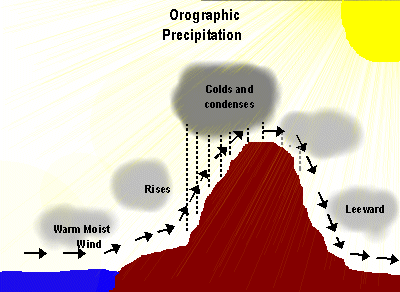

Precipitation can also occur as a result of hydrothermal alteration, in which minerals are altered by fluids that circulate through rocks. The precipitation process can occur in a variety of settings, including veins, disseminated deposits, and breccias. The excess minerals then precipitate out of the fluid and form new mineral grains or crystals. When fluids carrying dissolved minerals are forced to change their conditions, such as temperature, pressure, or chemical composition, they may become supersaturated and can no longer hold the minerals in solution.


Precipitation is an important process in the formation of mineral deposits. In geology, precipitation refers to the formation and deposition of minerals from a solution. From Zhang, Zhengwei & Wu, Chengquan & Yang, XY & Zheng, Chaofei & Yao, Junhua. The trinity model of the Au deposits with metallogenic porphyry, quartz vein and tectonically altered rocks of Ciemas, West Java, Indonesia. For example, alteration can lead to the formation of economic minerals through the precipitation of metals in the altered rock, while leaching can concentrate metals and other minerals in certain areas, leading to the formation of ore deposits. Leaching can be an important process in the formation of certain types of mineral deposits, such as oxide copper deposits and gold deposits.Īlteration and leaching can occur together, and can be important processes in the formation of many types of mineral deposits, particularly those formed by hydrothermal fluids. This can occur when groundwater or other fluids percolate through rocks and soils, dissolving minerals and carrying them away.

Leaching, on the other hand, is the process of dissolving minerals and other materials from rocks and soils through the action of water. Alteration can occur through a variety of processes, such as hydration, oxidation, sulfidation, and silicification. Hydrothermal fluids, which are superheated, mineral-rich water solutions, can alter the chemical and mineralogical composition of rocks. Alteration and LeachingĪlteration and leaching are important geological processes that can lead to the formation of mineral deposits.Īlteration refers to the changes that occur in rocks due to the action of hydrothermal fluids. The study of hydrothermal fluids and their role in mineral deposit formation is an important part of economic geology. When these fluids come into contact with cooler rocks or are released to the surface, they can cause the formation of various types of mineral deposits, including gold, silver, copper, and lead-zinc deposits, among others. Hydrothermal fluids can be generated by a variety of geological processes, including magmatic activity, the heating of groundwater by hot rocks, and the circulation of seawater through the oceanic crust. They are usually aqueous solutions that contain various dissolved substances, including minerals and gases, and can be rich in metals and other elements. Hydrothermal fluids are fluids that exist at high temperatures and pressures deep within the Earth’s crust. Fluids play an important role in the transport of heat, mass, and energy, and are involved in a wide range of geological phenomena, including hydrothermal systems, volcanism, and tectonic deformation. They are a major component of many geological processes, such as the circulation of the Earth’s mantle, the formation of mineral deposits, and the movement of groundwater in the subsurface. Fluids are substances that have no fixed shape and can be either liquid or gas. In geology, a fluid is a substance that can flow and take the shape of its container. The presence of these metals can make the deposits economically valuable and important sources of minerals and metals for human use. The composition of the hydrothermal fluids can vary widely depending on their source, and can contain a variety of elements, including gold, silver, copper, lead, zinc, and uranium, among others. As the fluids cool, the minerals can precipitate out of the fluid and form deposits. However, it is thought that the fluids can dissolve minerals from the surrounding rocks, and then transport them through fractures and pore spaces in the rock. The exact mechanism by which these fluids transport and deposit minerals is complex and not fully understood.


 0 kommentar(er)
0 kommentar(er)
